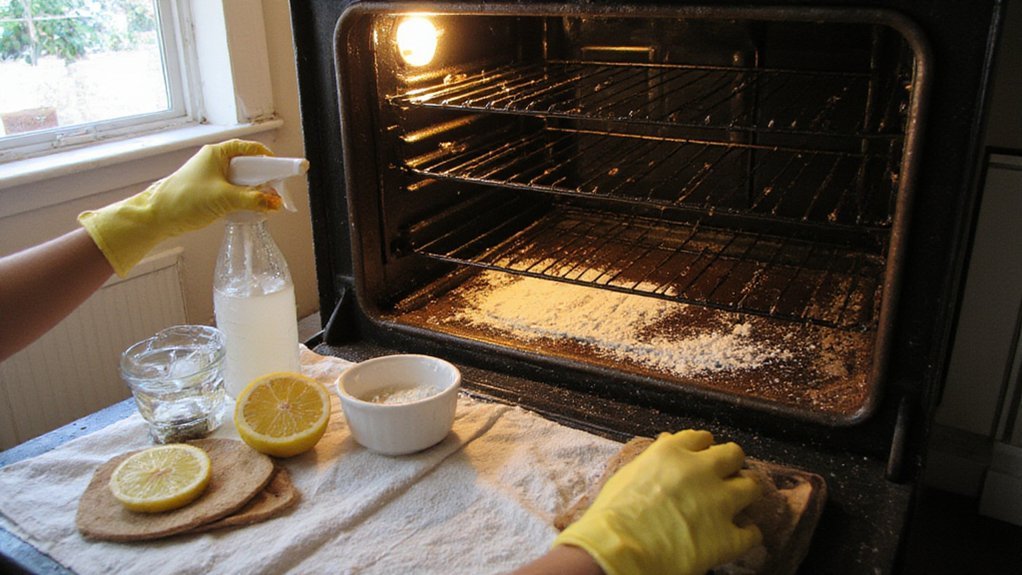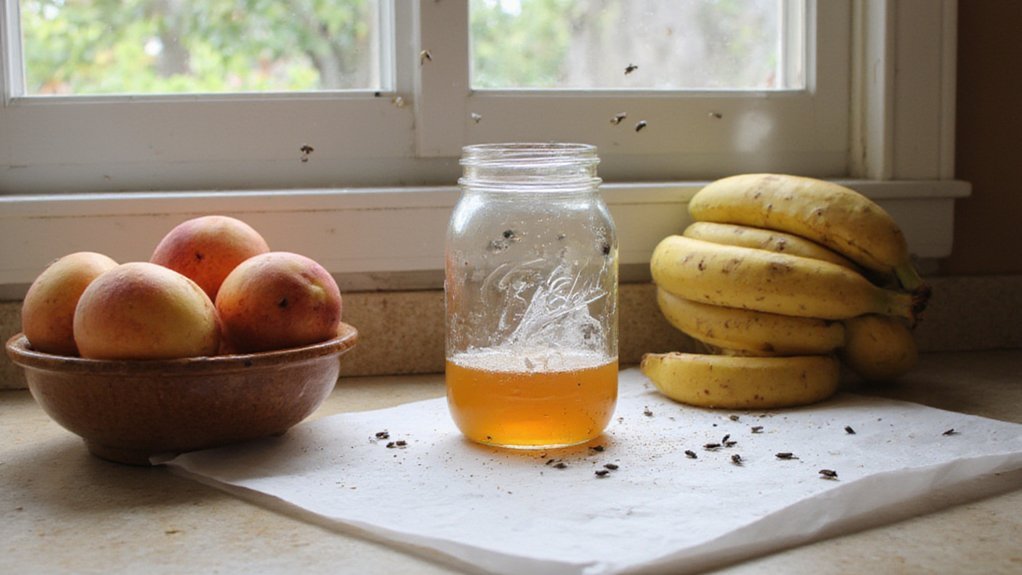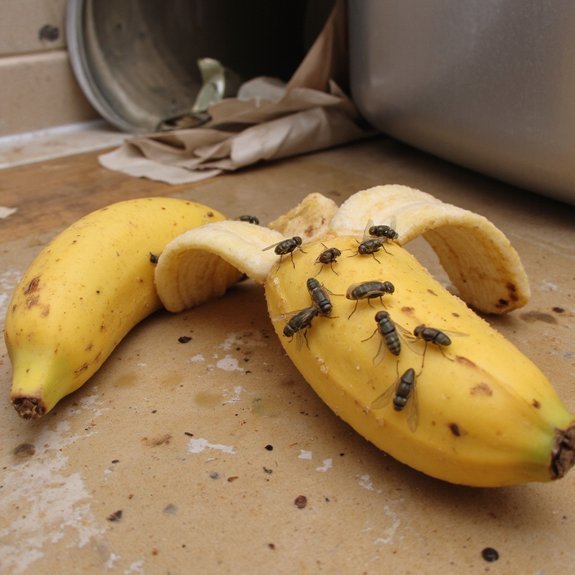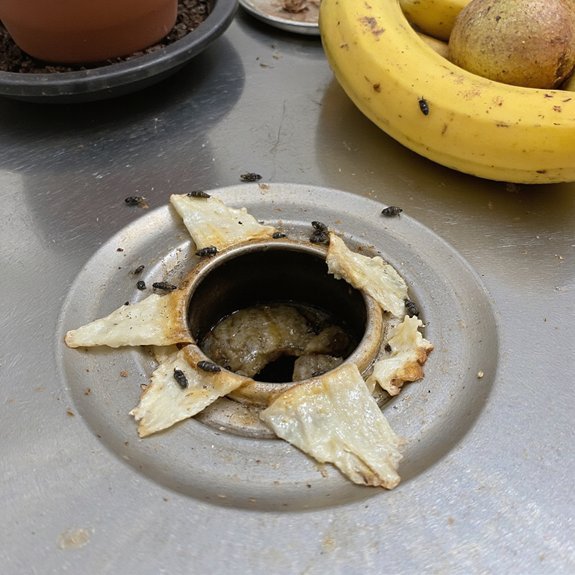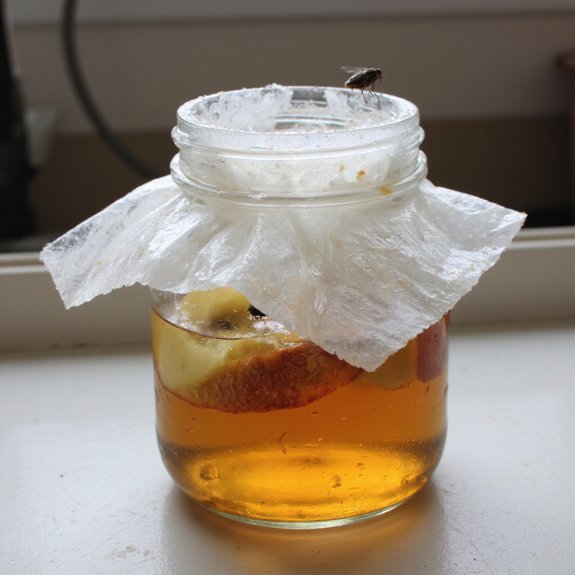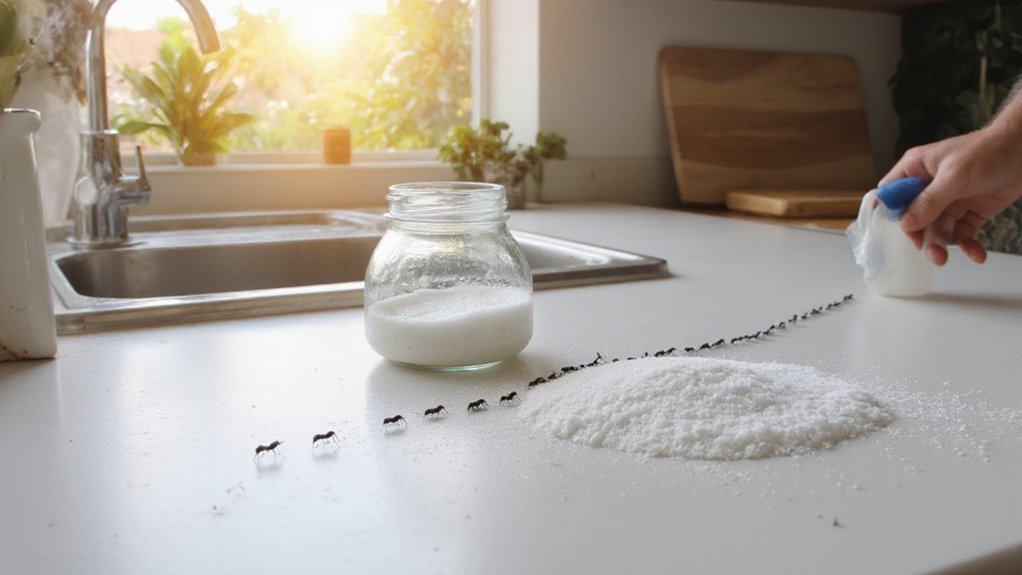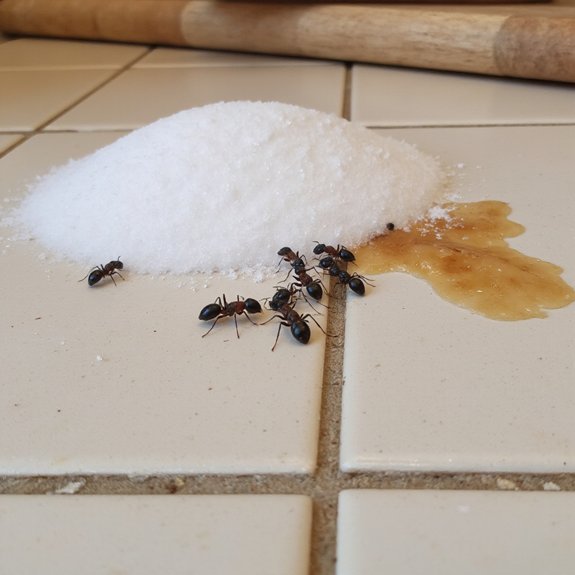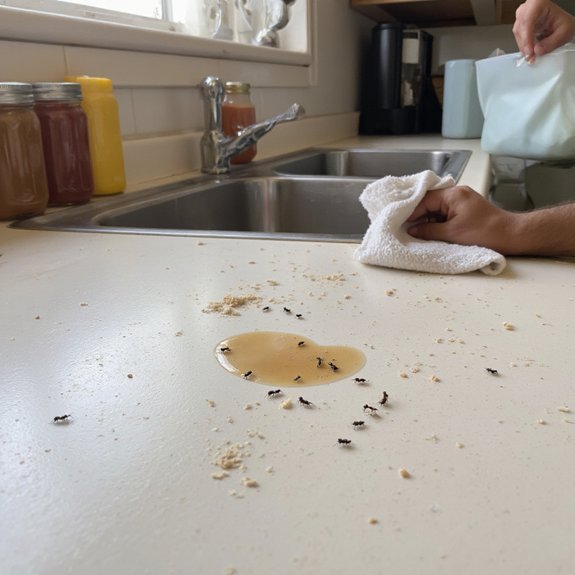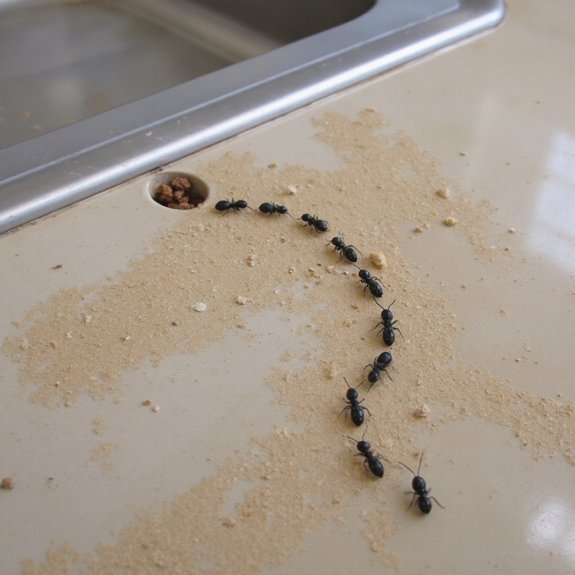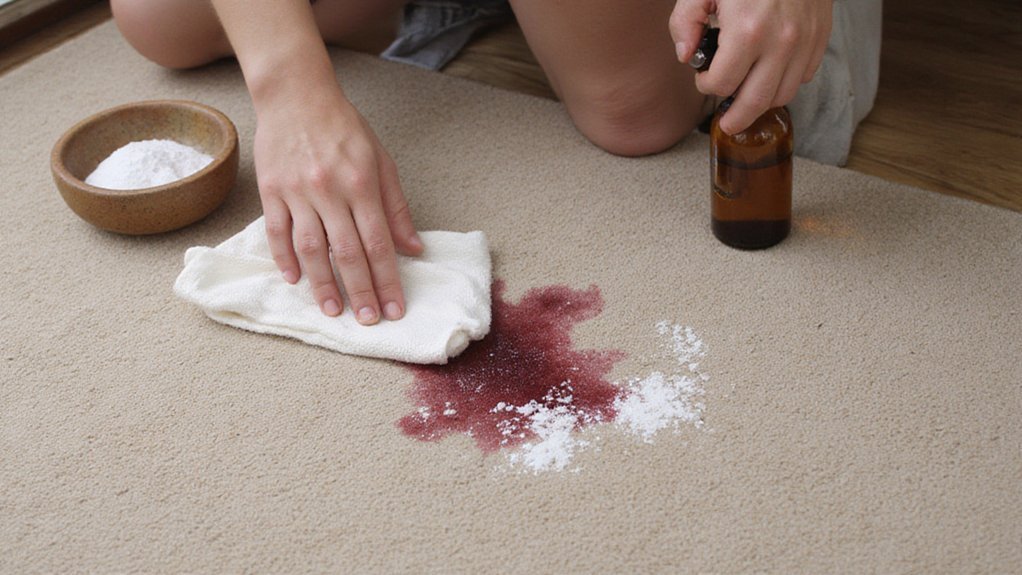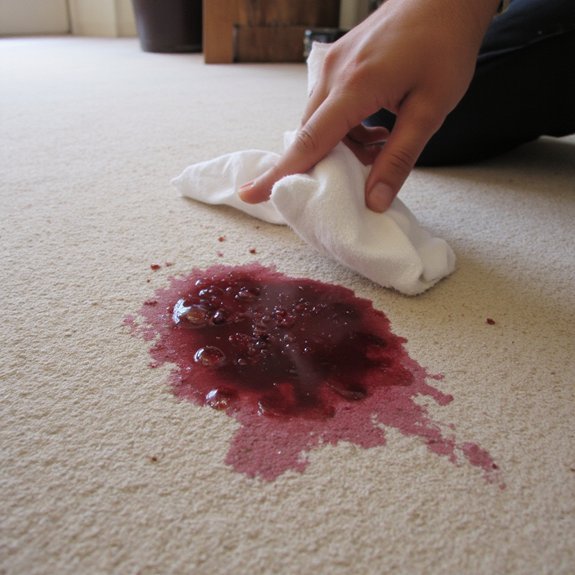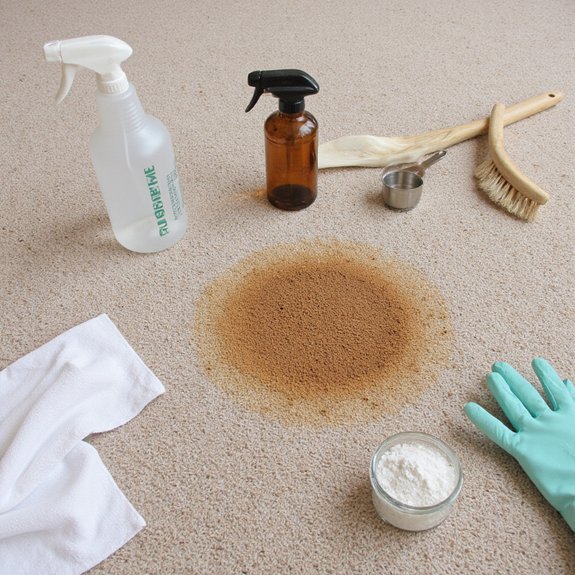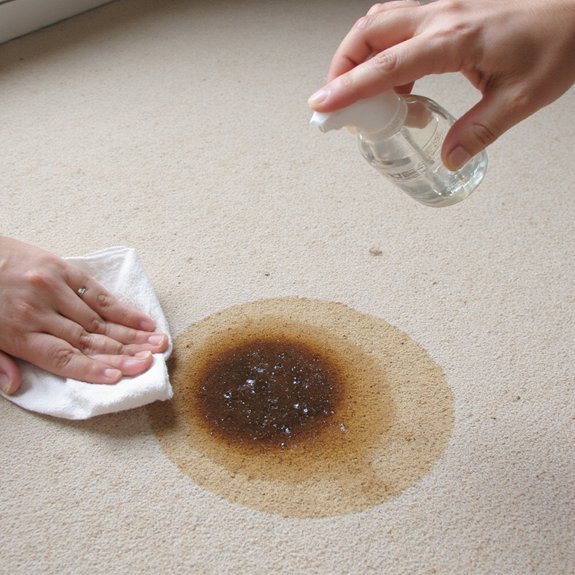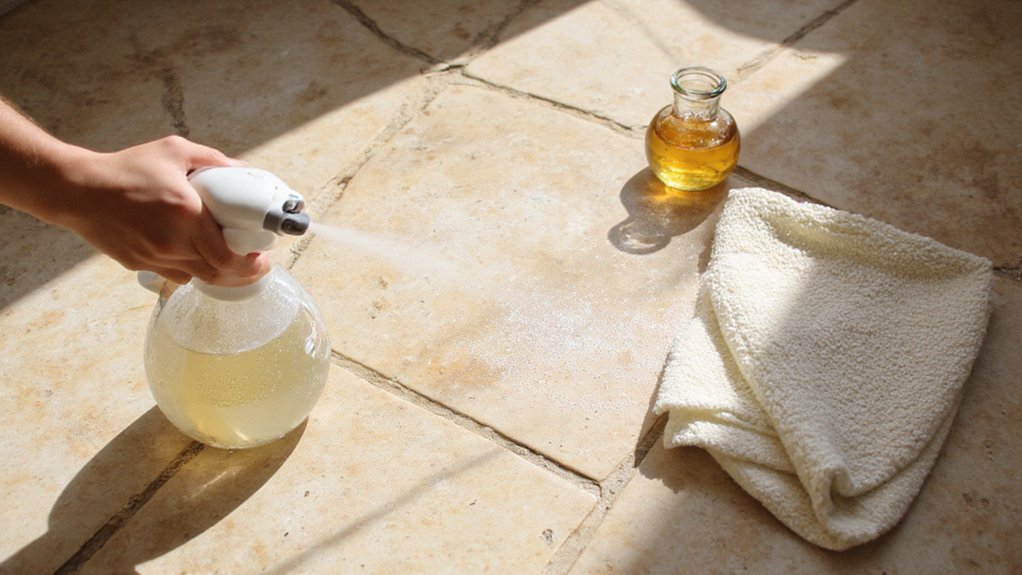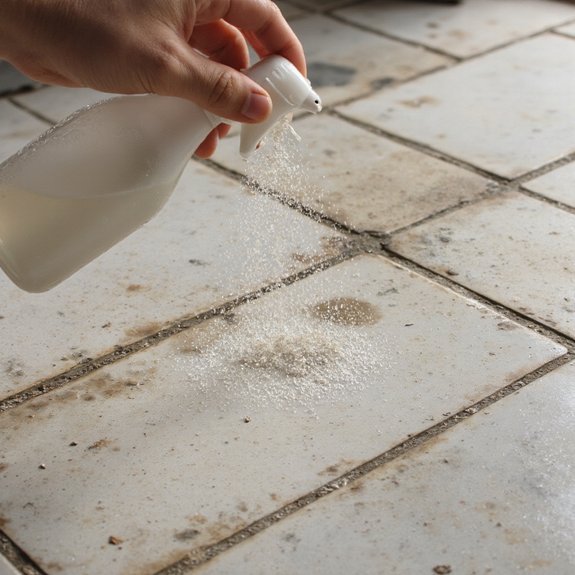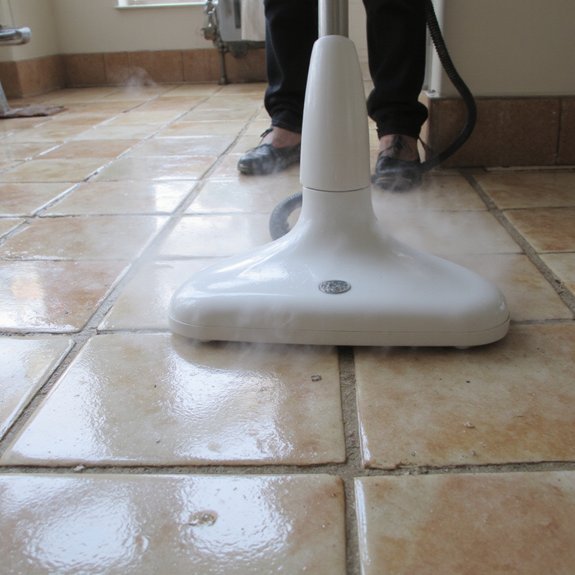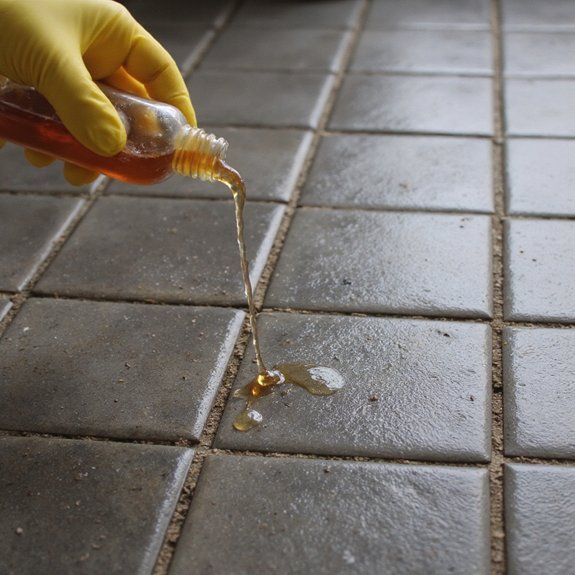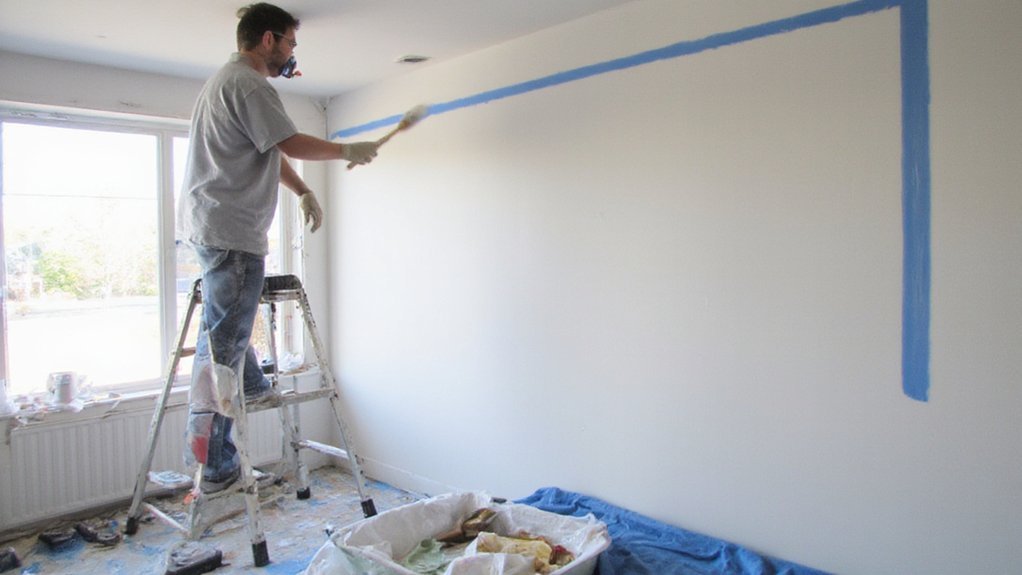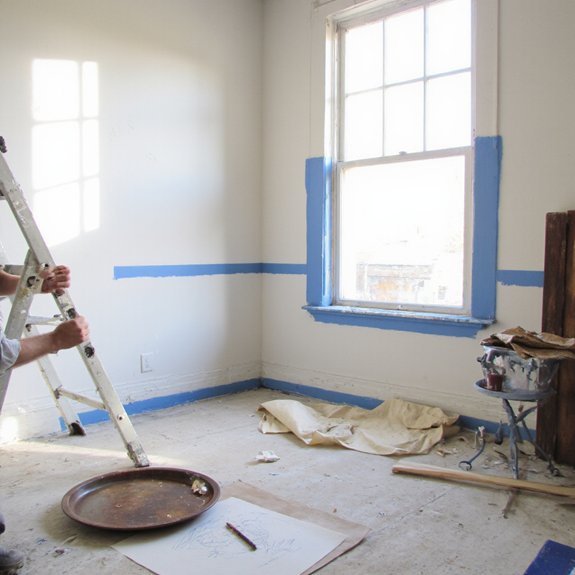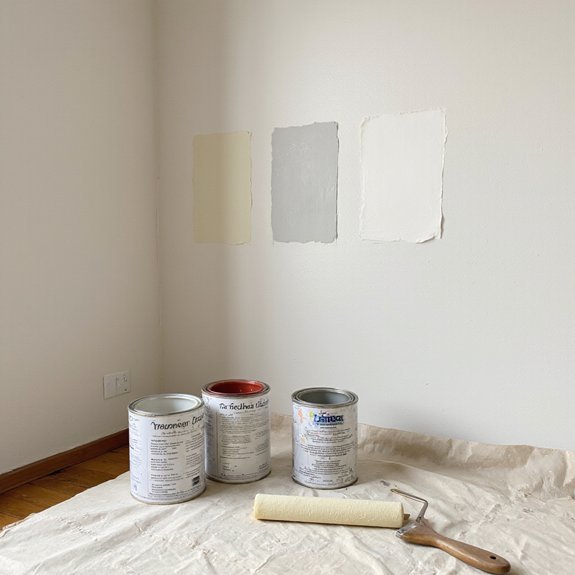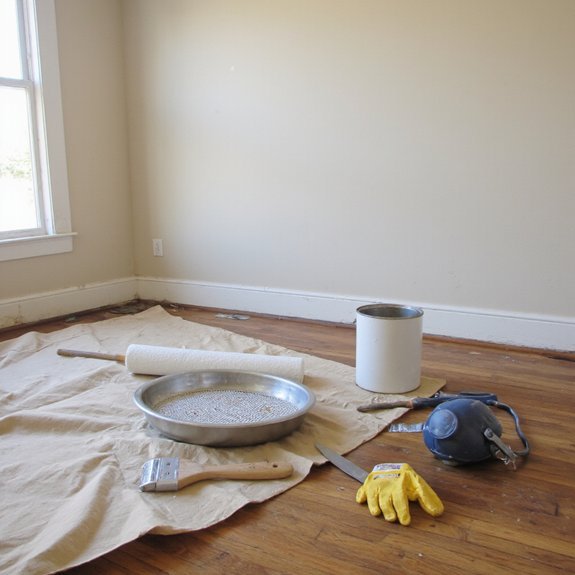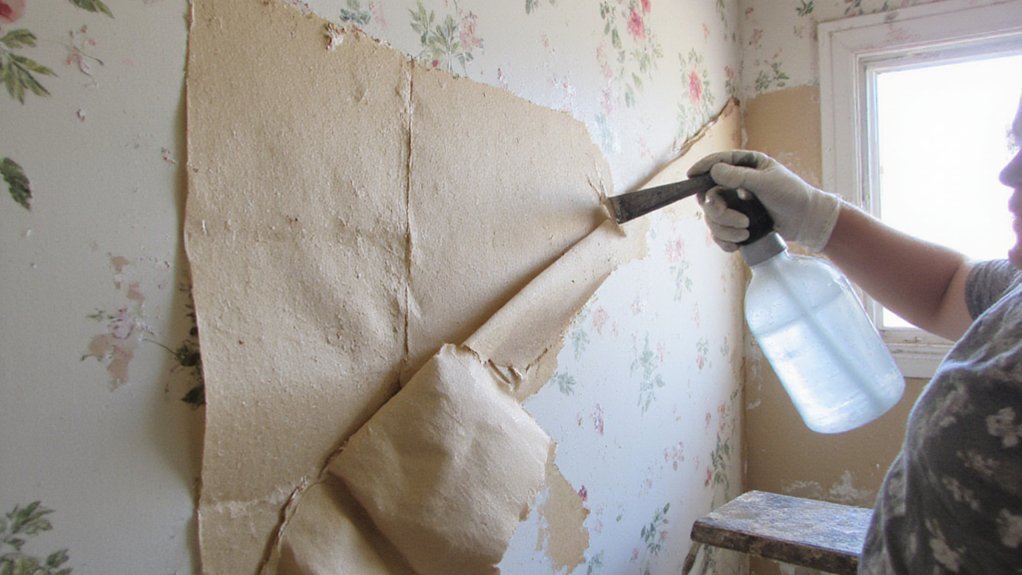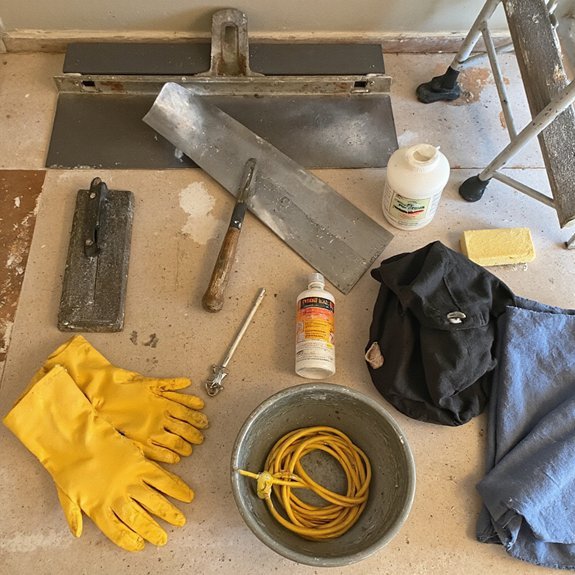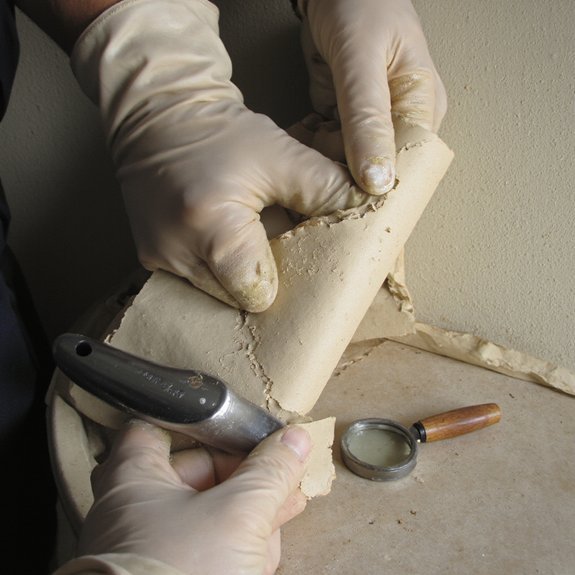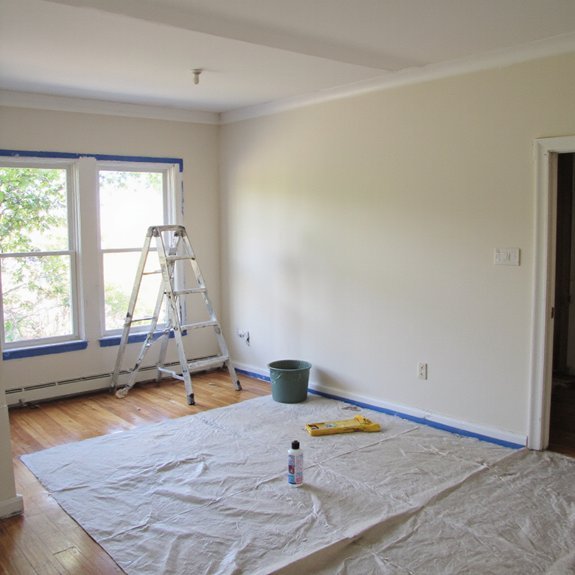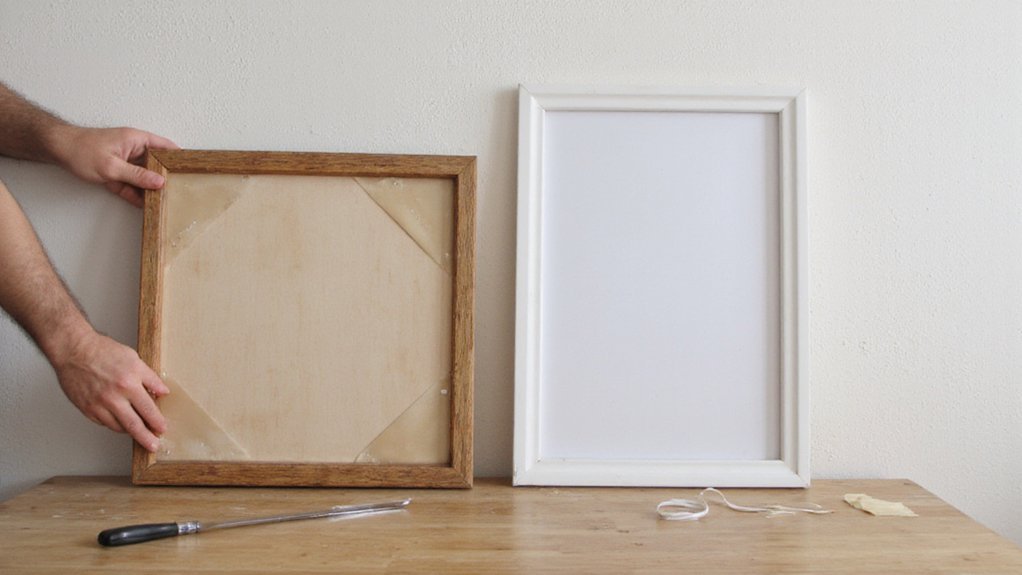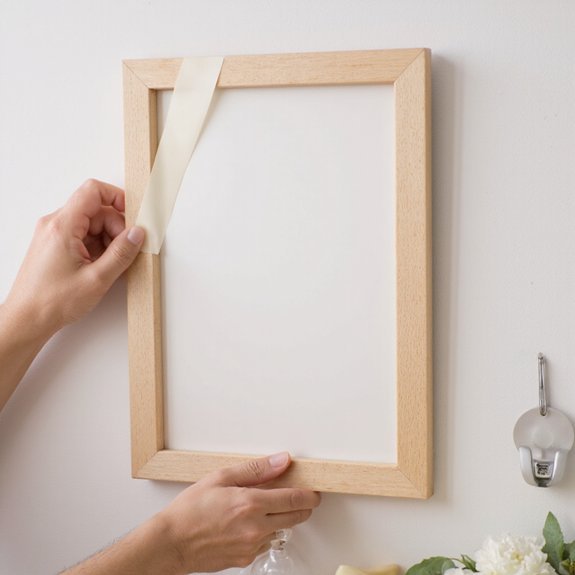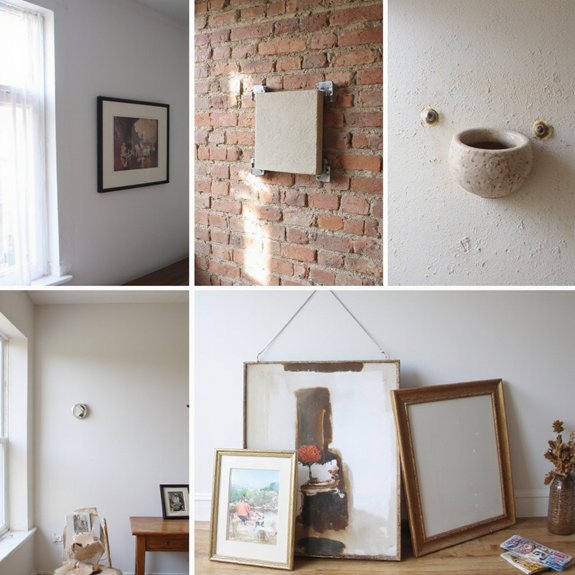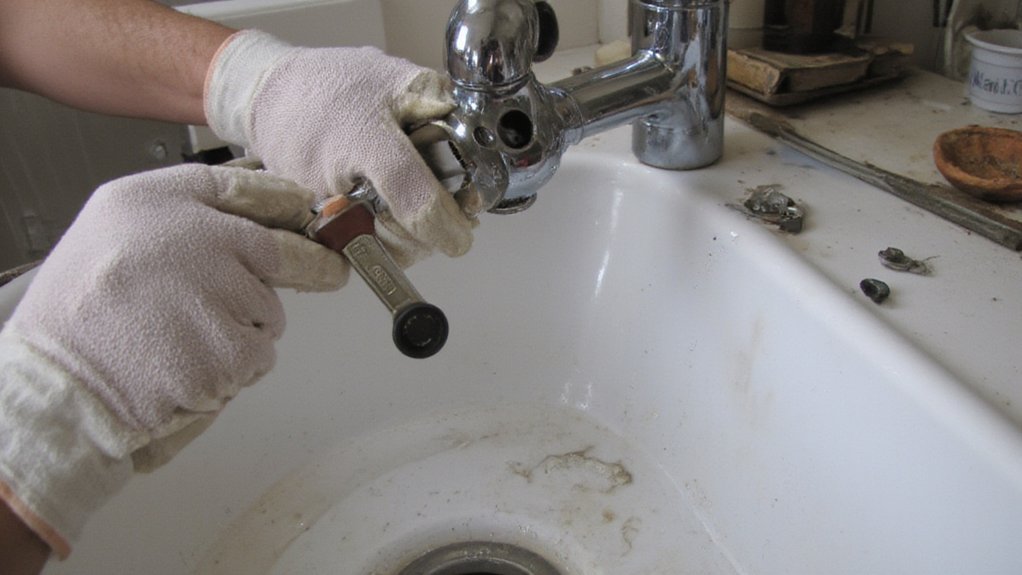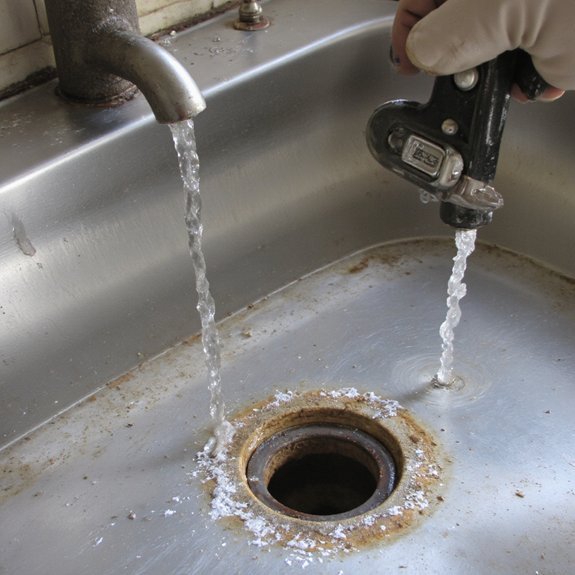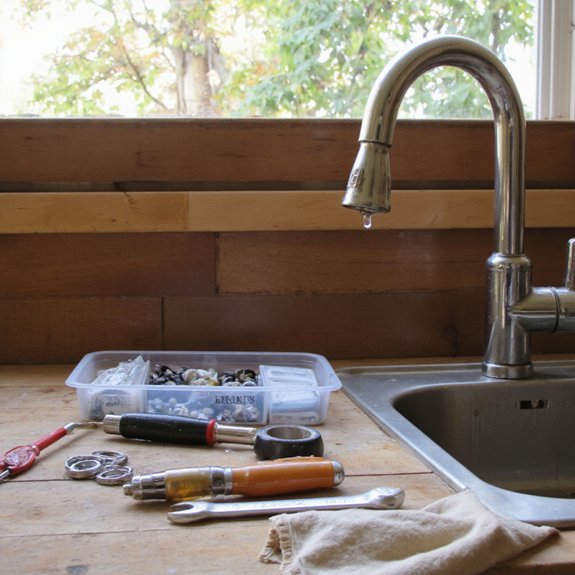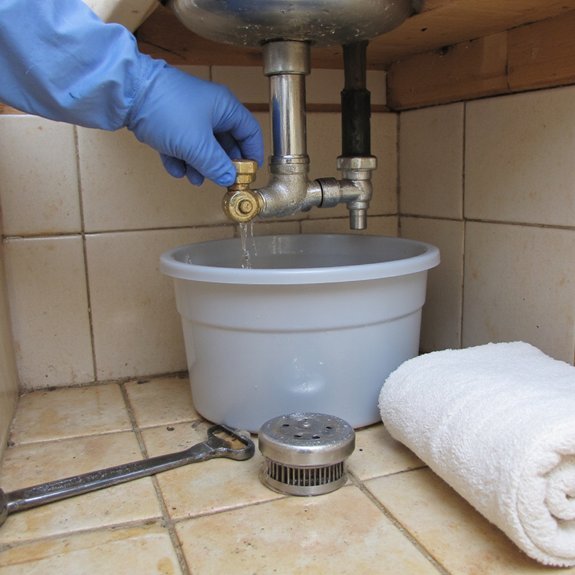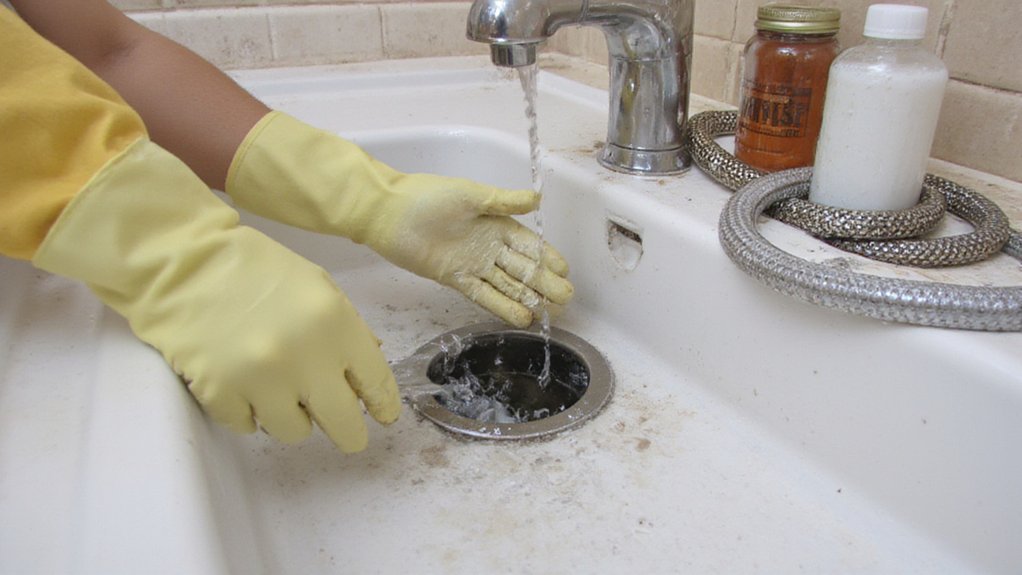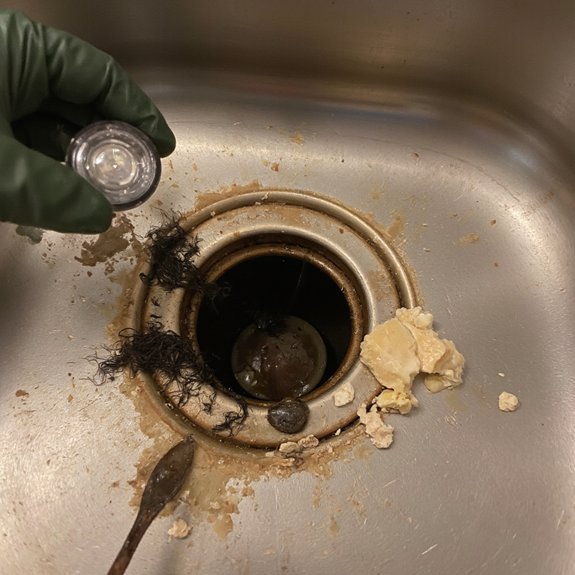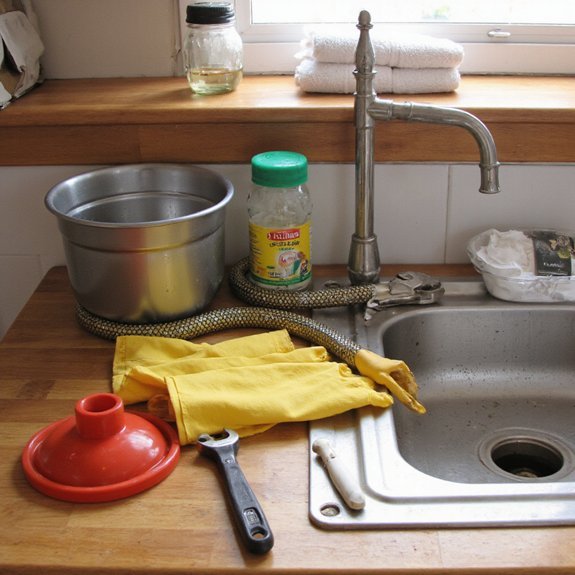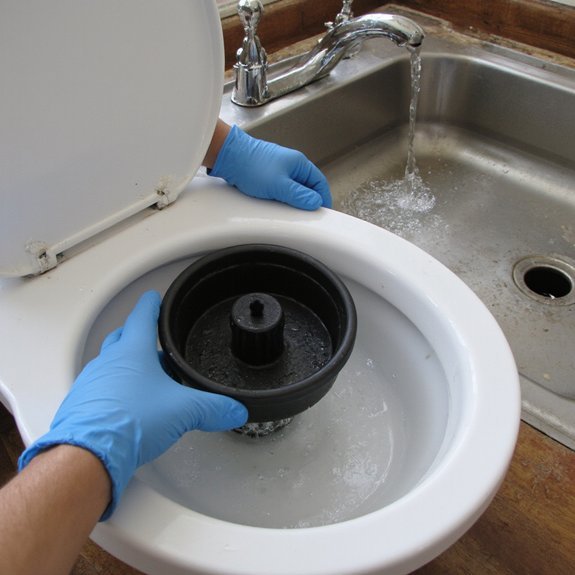You can clean a greasy oven without harsh chemicals and still get great results. Remove racks, scrape loose gunk, and use pantry ingredients to break down baked-on grime. You’ll get an overnight baking soda paste and a faster steam-and-vinegar option, plus safe tips for racks and glass. Keep going and you’ll have a practical, step-by-step plan to restore your oven with minimal fuss.
Key Takeaways
- Ensure the oven is cool, unplugged, and well-ventilated; remove racks and cover nearby surfaces before cleaning.
- Apply a baking soda-and-water paste to fouled areas, let sit overnight, then wipe away softened grime with a damp cloth.
- For faster loosening, steam-clean by heating a dish of equal parts water and white vinegar at 200°F for 20–30 minutes, then wipe.
- Soak racks and trays in hot, soapy water with baking soda for 30–60 minutes, scrub with a non-scratch brush, rinse, and dry.
- Finish by misting vinegar to neutralize baking soda, buffing glass with a microfiber cloth, and wiping spills promptly to prevent buildup.
Why Choose Non-Toxic Oven Cleaning Methods
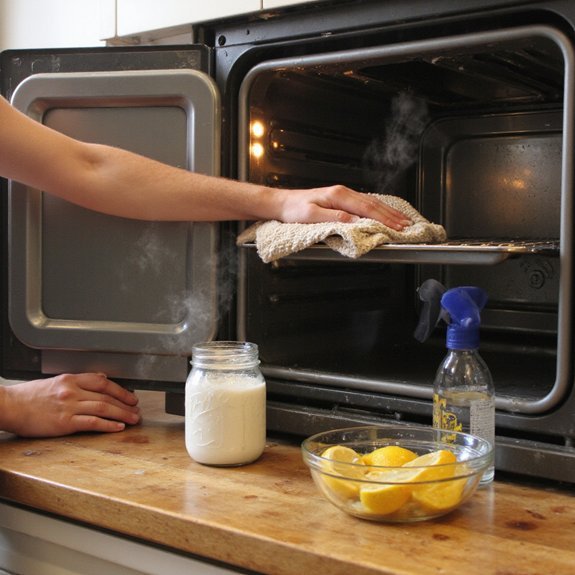
Because harsh oven cleaners release strong fumes and leave residues you can inhale or transfer to food, choosing non-toxic methods protects your health and indoor air quality. You reduce chemical exposure for yourself, family and pets while keeping cooking surfaces free of persistent toxins. You’ll also avoid corrosive damage to oven finishes and seals, extending appliance life and saving money. Non-toxic approaches encourage innovation: you can adapt techniques, timing and heating patterns to boost results without aggressive chemistry. eco friendly alternatives deliver practical performance when you combine mechanical action, heat and patience, so you don’t sacrifice cleanliness. You’ll notice fewer odors, less respiratory irritation and reduced wastewater impact. Choosing safe cleaning models aligns with sustainability goals and regulatory trends, and supports a safer kitchen culture. You’ll gain confidence applying repeatable, low-risk methods that prioritize effectiveness, longevity and indoor wellbeing. You’ll also share these improvements with your household.
What You’ll Need: Simple Ingredients and Tools
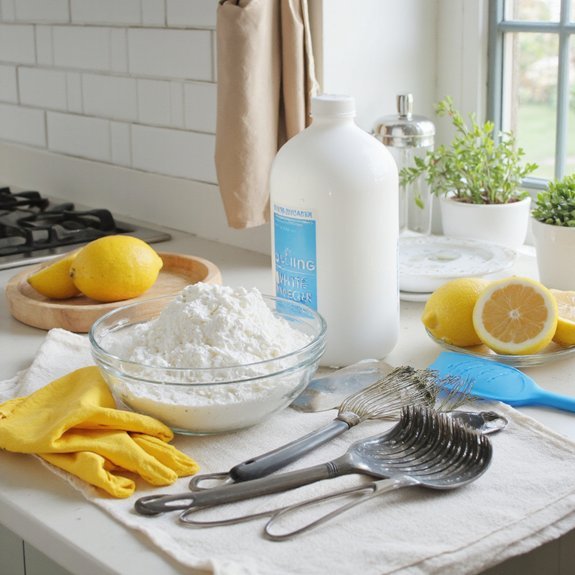
Before you start, gather a short list of common, non-toxic supplies so the job goes smoothly: baking soda, white vinegar, liquid dish soap, warm water, and a spray bottle. Next assemble other essential tools: a silicone spatula or plastic scraper, microfiber cloths, a soft scrub brush, rubber gloves, and a large bowl. For targeted stains, keep a paste bowl for mixing baking soda and water; for steam loosening, a kettle or pot to heat water helps. These natural cleaners work together—baking soda for abrasion, vinegar for cutting grease, and dish soap for dissolving grime—so you won’t need harsh solvents. Choose a spray bottle with adjustable nozzle for control and label it. Pick cloths you can launder and a nonmetallic scraper to protect oven surfaces. If you like innovation, consider a reusable silicone oven liner for prevention. With these items ready, you’ll streamline the cleaning sequence and work efficiently.
Prep Steps Before You Start Cleaning
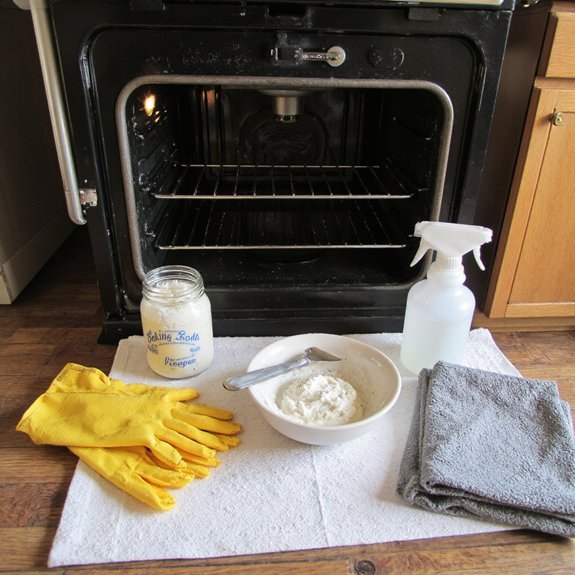
When the oven’s cooled, turn off the power (or unplug/disconnect the circuit) and open a window to ventilate, then put on rubber gloves and protective clothing. Next, pull out racks and trays; inspect for damage and set aside on a protected surface. Assemble your pre cleaning checklist: gloves, scraper, microfiber cloths, spray bottle, baking soda, vinegar, bowl, and trash bag. Remove loose crumbs and debris with a handheld vacuum or brush. Lay down paper or towels under the oven door to catch drips. If you have a self-clean feature, note its lock and cool-down timings and skip it if you want chemical-free control. Check for flammable items nearby—curtains, dish towels—and clear them. Read appliance manual quick-safety notes for model-specific safety precautions. Position a flashlight to spot hidden grime, and have a phone handy in case you need assistance. When you’ve completed this methodical pre-check, you’re ready to clean.
Overnight Baking Soda Paste Technique
You mix baking soda with a little water until it’s a spreadable paste. You spread the paste over oven surfaces, avoiding heating elements and concentrating on greasy spots. Leave it overnight, then wipe off the softened grime with a damp cloth in the morning.
Make the Paste
Make a cleanup-ready baking soda paste by stirring 1/2 to 3/4 cup baking soda with just enough water to form a spreadable, slightly thick consistency; it’ll loosen grime overnight. You’ll work in a nonreactive bowl—glass or plastic—and add water incrementally until the texture holds a peak without running. Aim for something like softened cream cheese: scoopable, not watery. If you want innovation, fold in a teaspoon of liquid castile soap for extra emulsifying power or a few drops of citrus essential oil for fragrance and grease-fighting aldehydes. For stubborn grease, mix in a tablespoon of salt for mild abrasion. Make only what you’ll use within 24 hours; store leftover paste in an airtight jar in the fridge for up to two days and label.
Apply to Oven Surfaces
Before spreading the paste, turn off and cool the oven, remove the racks, lay down old towels or paper around the door, and put on gloves so you can work without touching grime. Decide where paste goes: focus on burnt-on spots, oven walls, floor and door interior, avoiding heating elements. Match application to oven surface types—porcelain, enamel, stainless steel and self-cleaning finishes demand different thicknesses and touch. Smear a thin, even layer over soiled areas with a silicone spatula or gloved hand; build up slightly on heavy buildup. Note oven material considerations: avoid abrasive scrubbing on delicate coatings, and keep paste off vents and seals. Label the time you applied it so you can plan an efficient overnight dwell period. Monitor nearby floor protection.
Wipe off Next Morning
Morning brings the chance to remove the paste and the loosened grime. You’ll start by opening windows and wearing gloves, then use a damp sponge to wipe away most residue, working top to bottom so nothing drips on cleaned areas. For stubborn spots, scrape gently with a plastic spatula, then reapply a little water to reactivate the paste. Collect the slurry with paper towels or a microfiber cloth, rinsing the cloth frequently. Rinse racks separately in a tub, then dry and replace. Finish by wiping interior surfaces with a vinegar mist to neutralize baking soda and highlight areas you missed. This overnight baking soda method offers innovative oven cleaning using safe alternatives to harsh chemicals; it’s easy to repeat as part of routine maintenance.
Quick Steam Cleaning With Vinegar and Water
You mix equal parts white vinegar and water in an oven-safe dish or the oven’s drip pan. Place the dish on a middle rack, heat the oven to 200°F (about 95°C) for 20–30 minutes to create steam, then turn it off and let it cool a bit so it’s safe to handle. Wipe softened grime with a damp cloth or sponge, repeating the process for stubborn spots.
Vinegar and Water Mix
A simple vinegar-and-water steam loosens baked-on grease so you can wipe it away with minimal scrubbing. You’ll prepare a balanced water mixture to maximize vinegar benefits without strong fumes. Use common white vinegar and warm water; the acidity softens residues while steam reaches crevices. You’ll avoid harsh chemicals, protect oven surfaces, and speed cleanup when you let the vapor work briefly. Focus on proportion and temperature, not force, to preserve seals and coatings. After steaming, you’ll wipe with a microfiber cloth and repeat targeted spots as needed. This approach feels innovative yet practical—tuning concentration for stubborn grime. Consider small tests on hidden areas to confirm compatibility before full application. Keep ventilation moderate and consistent.
- White vinegar concentration
- Warm water ratio
- Safety and surface testing
Quick Steam Cleaning Steps
When you’re ready, set the racks to mid-level, remove loose debris, and preheat the oven to about 200°F (95°C) so you generate gentle steam without risking coatings or seals. Place a shallow oven-safe pan filled with one cup water and one cup distilled vinegar on the rack, then close the door and let steam work for 20 to 30 minutes. Wear oven mitts, open carefully to release heat, and use a silicone spatula or soft cloth to lift loosened grime. For stubborn spots, sprinkle baking soda, mist with a vinegar-water spray, wait five minutes, then wipe. Finish by airing the oven with the door ajar. These quick tips streamline steam cleaning, saving time while protecting finishes and seals. You’ll appreciate the efficient, chemical-free result.
Removing and Cleaning Oven Racks and Trays
Before you begin, let the oven cool completely, then slide out the racks and trays so you can work comfortably and avoid burns. You’ll handle rack removal gently: lift the front, angle slightly, then slide straight out. Fill a bathtub or large basin with hot water and a few drops of biodegradable dish soap; for innovative, low-odor cleaning solutions, add baking soda to boost lifting power. Submerge racks and trays and let them soak 30 to 60 minutes, then use a non-scratch scrubber to wipe away loosened debris. Rinse thoroughly and dry to prevent spotting before replacing.
- Use a large basin or tub for even soaking.
- Choose non-abrasive tools to protect finishes.
- Dry completely to avoid rust and improve longevity.
Replace racks carefully, aligning rails, and test they slide smoothly. Store removed parts flat if you’ll apply different cleaning solutions later. Inspect parts before returning them to oven.
Tackling Tough, Burnt-On Grease and Grime
Start by loosening charred bits with a plastic scraper or coarse sponge so you’re not trying to clean through hardened layers. Work in sections: mist a paste of baking soda and water onto affected areas, let it sit for 30 to 60 minutes, then agitate with a nylon brush. For persistent grease removal, spray distilled white vinegar over the paste to create fizzing action that lifts residues; wipe with a damp microfiber cloth. For deep burnt stains, repeat application and use a scraper at a low angle to avoid scratching. Steam accelerates breakdown — place a bowl of boiling water inside a closed oven for 15 minutes, then tackle softened grime. Rinse thoroughly to remove alkaline residue, then dry with a clean cloth. You’ll get better results by testing small areas first, adjusting dwell time, and combining mechanical action with eco-friendly chemistry rather than reaching for harsh solvents.
Cleaning the Oven Door and Glass Safely
Anyone can restore a streak-free oven door without harsh chemicals by using gentle tools and deliberate technique. Start by removing the door (if your model allows). Mix a paste of baking soda and water, apply to inner glass, and let it sit 15–30 minutes; this loosens grime without abrasives. For glass cleaning on outer frame, use a microfiber cloth with diluted vinegar to dissolve grease. Scrape softened residue with a plastic scraper or old card; avoid metal. Rinse residues with a damp cloth, then buff dry with a clean microfiber for streak-free results. If glass panels are removable, wash them in warm, soapy water and dry before reinstalling. Innovate by using a spray bottle for the paste or a squeegee for final passes to speed the process.
- Baking soda paste for inner glass
- Vinegar and microfiber for outer surfaces
- Plastic scraper and squeegee for finishing
Maintenance Tips to Keep Your Oven Cleaner Longer
With the door and glass spotless, you’ll get longer-lasting results by adopting a few simple habits that prevent grime from building up. Wipe spills immediately with a damp cloth and a mild, nonabrasive cleaner; let nothing carbonize. Empty crumb trays and clean racks weekly so residues don’t become stubborn. Use silicone mats or oven-safe liners for roasts and baking to catch drips—remove them after each use. Run a self-cleaning or low-temp steam cycle monthly only if your model supports it, combining it with a light wipe down. Schedule regular maintenance checks: inspect gaskets, hinges, and burners for wear and reseal or replace parts as needed. Keep ventilation clear and test your oven thermometer regularly to avoid overheating food. Adopt preventive care routines in a checklist you follow after heavy use. These small, consistent actions preserve finishes, reduce deep cleans, and extend your appliance’s efficiency and save energy too.
